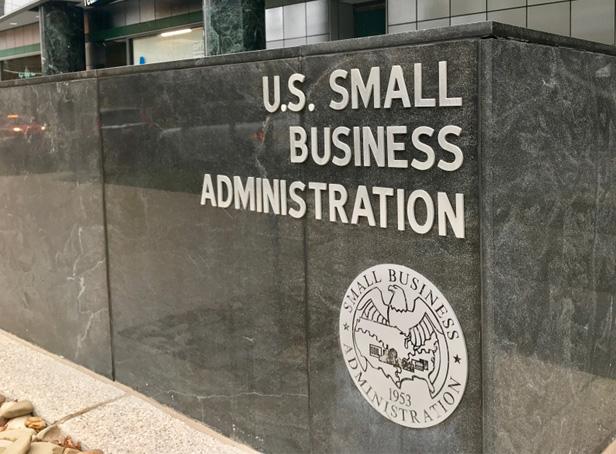In an era where reshoring and domestic manufacturing have become rallying cries for economic revitalization, a closer look reveals a stark reality for many small businesses: producing goods in the United States remains an elusive goal. Despite the political push to bring jobs back home, the high costs, complex regulations, and supply chain challenges continue to create formidable barriers. This article explores the multifaceted reasons why most small businesses find it practically impossible to manufacture their products domestically, shedding light on the economic and structural hurdles that keep American factories out of reach for the nation’s entrepreneurs.
The High Costs of Domestic Manufacturing and Its Impact on Small Businesses
Small businesses face overwhelming financial barriers when attempting to manufacture domestically. The steep cost of labor, driven by minimum wage laws and benefits, can exceed that of offshore alternatives by more than double. Additionally, the burden of compliance with stringent environmental and safety regulations inflates operational expenses, particularly impacting those without the capital to invest in state-of-the-art facilities. Rising prices for raw materials, coupled with limited access to volume discounts, further exacerbate the challenge, forcing many entrepreneurs to reconsider sourcing or production abroad where economies of scale are more achievable.
Investment in advanced manufacturing technology and skilled workforce training is critical but often prohibitively expensive for small enterprises. Without significant funding or subsidies, many remain locked out of the domestic manufacturing sector. Below is a snapshot illustrating the comparative costs across key factors influencing the decision to manufacture in the U.S. versus overseas:
| Cost Factor | Domestic (USD/unit) | Offshore (USD/unit) |
|---|---|---|
| Labor | $15 | $5 |
| Regulatory Compliance | $8 | $2 |
| Raw Materials | $10 | $7 |
| Technology Investment | $12 | $3 |
Key issues faced by small businesses include:
- Limited capital access to scale production
- High fixed costs in technology and compliance
- Challenges in supply chain and logistics flexibility
- Competitive pressure from large manufacturers taking advantage of economies of scale
Supply Chain Complexities and Resource Constraints Facing Small Manufacturers
Small manufacturers face an intricate web of challenges that make maintaining a stable production line a daunting task. At the heart of these difficulties lie fragmented supply chains, where sourcing raw materials often involves multiple intermediaries, each introducing potential delays and cost fluctuations. Unlike large corporations, smaller businesses typically lack the bargaining power to secure favorable contracts or bulk discounts. These limitations are compounded by unexpected disruptions, such as transportation bottlenecks or geopolitical tensions, which cause raw material prices and delivery schedules to oscillate unpredictably.
Additionally, resource constraints extend beyond the supply chain. Limited access to capital restricts small firms from investing in advanced manufacturing technologies or expanding facilities to improve efficiency. They also struggle with workforce shortages exacerbated by highly specialized skill requirements, further tightening production capacity. The following table highlights some critical constraints small manufacturers regularly encounter:
| Constraint | Impact | Typical Resolution Timeline |
|---|---|---|
| Raw Material Sourcing | Price volatility & delays | Weeks to months |
| Capital Availability | Limited upgrades & scale | Months |
| Labor Shortages | Reduced output & quality risks | Ongoing |
| Logistical Disruptions | Missed deadlines | Days to weeks |
Technology and Automation Barriers Limiting US-Based Production Opportunities
Despite advances in robotics and artificial intelligence, the high initial investment cost of automation remains a formidable barrier for small businesses trying to establish manufacturing operations in the US. Unlike large corporations equipped with deep capital reserves, small manufacturers often face a steep learning curve and prohibitive expenses when attempting to integrate state-of-the-art technology. This disparity is exacerbated by the rapid pace of innovation, which makes the ROI on automation unpredictable and sometimes unattainable without significant scale.
Additionally, the complexity of maintaining and updating automated systems requires specialized expertise that is not always accessible to smaller teams. Key challenges include:
- Workforce shortages: Skilled technicians and engineers are in high demand, driving up labor costs.
- Customization limitations: Off-the-shelf automation solutions rarely fit the nuanced needs of small batch production.
- Integration hurdles: Legacy equipment and software often don’t sync seamlessly with modern systems, leading to inefficiencies.
| Factor | Impact on Small Business | Automation Scale |
|---|---|---|
| Capital Requirement | High upfront cost limits access | Large-scale friendly |
| Technical Expertise | Shortage raises operational risk | Centralized teams preferred |
| Customization | Limited flexibility impedes niche markets | Standardized output |
Strategic Approaches for Small Businesses to Overcome Manufacturing Challenges
For small businesses, the seemingly insurmountable hurdles in manufacturing within the United States require more than just resilience — they demand strategic ingenuity. Many small manufacturers grapple with high labor costs, stringent regulations, and limited access to advanced technology. To counter these, businesses are increasingly exploring collaborative manufacturing models such as contract manufacturing partnerships and shared production spaces, which allow them to leverage economies of scale typically reserved for larger competitors.
Additionally, embracing advanced digital solutions can transform these challenges into opportunities. Strategic investments in automation, 3D printing, and data-driven supply chain management enable smaller players to reduce overhead, optimize turnaround times, and maintain quality. Below is a streamlined comparison of common strategic approaches:
| Strategy | Benefit | Potential Drawback |
|---|---|---|
| Contract Manufacturing | Cost reduction by outsourcing | Less control over quality |
| Shared Production Spaces | Lower upfront investment | Possible scheduling conflicts |
| Automation & Tech | Improved efficiency & scalability | High initial capital cost |
| Lean Supply Chains | Reduced inventory & waste | Vulnerable to disruptions |
Insights and Conclusions
Ultimately, the challenges faced by small businesses attempting to manufacture in the U.S. underscore broader systemic issues within the country’s industrial landscape. From high labor and material costs to complex regulatory frameworks and supply chain constraints, these obstacles create a difficult environment for smaller players to compete domestically. As policymakers and industry leaders seek to revitalize American manufacturing, addressing these foundational barriers will be critical to enabling more small businesses to keep production local—and help rebuild a manufacturing sector that works for all.




